Journal of Crystallization Process and Technology
Vol. 2 No. 2 (2012) , Article ID: 18643 , 11 pages DOI:10.4236/jcpt.2012.22007
Energy Efficiency Improvement of an Industrial Crystallization Process Using Linearizing Control
![]()
1Laboratory of Energetics, Electronics and Processes, University of La Reunion, Saint-Denis, France; 2GEPEA, ONIRIS, Nantes, France.
Email: *michel.benne@univ-reunion.fr
Received September 13th, 2011; revised October 31st, 2011; accepted November 22nd, 2011
Keywords: Energy Efficiency Improvement; Linearizing Control; Industrial Control; Phase Changing; Crystallization
ABSTRACT
This paper illustrates the benefits of a multivariable linearizing control approach applied to an industrial crystallization process. This relevant approach is declined according to two different strategies: first, a setpoint tracking is proposed for the couple crystal mass/concentration, whereas a second way consists in tracking of crystal content and concentration. The controlled variables, unavailable on-line, are issued from an observer developed in previous works. The performance of these strategies, which application to cane sugar crystallization constitutes a real novelty, are compared with experimental data issued from a PID-controlled industrial plant. The results reveal a significant improvement of energy efficiency, leading to an economy of more than 10% of energy.
1. Introduction
In a context of sustainable development, energy efficiency remains a key challenge. In the case of industrial processes, several levers can be operated to decrease the energy consumption; using more effective control laws can be a significant lever. Such a strategy can lead either to the implementation of new strategies already proven otherwise, or to develop new control methodologies. In Bois Rouge sugar mill, where the sugar crystallization process is controlled using the well-known PID controller, the growing phase requires around 900 kJ per kilogram of sugar, which leads to an annual energetic consumption of 30,000 MWh regarding the annual production of 120,000 tons of sugar.
Crystallization is a key stage for achieving the extraction of a solute from a saturated solution. The presence of a continuous phase and a dispersed phase gives rise to physicochemical phenomena such as nucleation, growth, agglomeration and dissolution. Commonly, growth and nucleation kinetics are represented in terms of the supersaturation, i.e. the difference between the solution and the saturation concentrations. The state of supersaturation can be reached by mean of cooling, evaporation or use of a solvent. Due to the strong nonlinearity of this process, its control remains an interesting challenge in terms of quality and global efficiency improvement.
Usually, a fine control of the crystallization process is mandatory. In this aim, several advanced control algorithms (nonlinear model-based predictive control, generic model control,  -control, etc.) were developed for both continuous and batch crystallization processes in numerous fields of application [1-7]. Even if modelbased strategies have proved to be efficient, in crystallization, the model design remains a crucial and difficult issue. The complexity lies in the development of nonlinear algebraic integro-partial differential equations to describe the crystals in terms of shape and size, leading to a crystal size distribution (CSD).
-control, etc.) were developed for both continuous and batch crystallization processes in numerous fields of application [1-7]. Even if modelbased strategies have proved to be efficient, in crystallization, the model design remains a crucial and difficult issue. The complexity lies in the development of nonlinear algebraic integro-partial differential equations to describe the crystals in terms of shape and size, leading to a crystal size distribution (CSD).
The problem addressed in this contribution is significantly different and the control objectives are much less restrictive, since the case mentioned here concerns the last stage of cane sugar extraction. Indeed, in cane sugar industry, in order to improve extraction, crystallization is achieved grade wise through multiple stages, with a decrease in purity from the first to the last stage. In the first stage, the objectives are similar to those mentioned above, that is, a good product quality, such as a good CSD. The concentration of impurities being relatively small, a wide variety of mathematical models can be found in the scientific literature to describe the sugar crystallization phenomena, both steady state and dynamic models [8-11]. Consequently, the most widely used methodology to estimate the crystallization rate involves the population balance [12,13] that gives information about CSD such as the mean particle size and deviation, or the number of particles.
In the second stage and more especially in the final stages of extraction, the control objective is limited to a maximal sucrose extraction of the solution, regardless of the quality of the CSD. Moreover, the large concentration of impurities in the solution keeps out to identify the usual momentum model parameters.
In all stage the process control is designed to maintain the solution in a supersaturated state, called metasble area.
In practice, due on-line measurement difficulties, the supersaturation σ is usually represented by the electrical conductivity κ. The process control is based on a conductivity setpoint tracking using a proportional integral derivative (PID) controller. This approach assumes a constant number of charge carriers N in solution. Experimental investigations point out the shortcomings of control strategies following a linear conductivity setpoint, specifically at the final stage. Indeed, the level of impurities increases from the 1st to the 3rd stage, which significantly modifies N. In this case, κ may be regarded as inappropriate to assess σ with accuracy during the growing phase [14]. Observation of growth phase operations from solutions containing a high level of impurities reveals the crystal content cc may decreases even if κ tracks the desired setpoint. A crystal content decreasing involves a bad crystallization rate and so a bad global efficiency. Besides, as described in previous works, the current PID control strategy has proved to be inadequate regarding the nonlinearities of the process [15].
This statement of fact leads to the proposition of alternative controlled variables and a more suitable control algorithm.
In this paper, two supersaturation control approaches, dedicated to the last stage of sugar crystallization, are presented to improve the process control. Both are based on a multivariable setpoint tracking control. The crystal mass and the solution concentration are used as controlled variables in the first control strategy. The crystal content and the solution concentration are used as controlled variables in the second. Finally, the linearizing control is used as control algorithm instead of the linear PID controller. Due to the unavailability of on-line crystal mass and concentration measurement, the proposed control strategies are based on an extended Luenberger observer.
This paper is organized as follows: Section 2 is dedicated to the model design based on mass and heat balance equations. Section 3 deals with the linearization control principle and the control design. Finally, in the fourth section the benefits of the proposed control strategies are presented and discussed via simulation results.
2. Model Design
As previously mentioned, the production objective of the last stage of sugar crystallization is limited to a maximization of the sugar extraction. Therefore, in this section a simplified approach, without CSD is developed. This one allows to consider sugar only under two forms, which is dissolved or crystallized.
The model is based on an explicit conversion of dissolved sucrose to crystallized sucrose thanks to a crystallization conversion rate parameter, assuming nucleation, dissolution and agglomeration to be negligible during the growing phase [16,17] in supersaturated conditions.
2.1. Energy and Mass Balance
The last crystallization step is performed through a semi batch vacuum pan, operating as continuously stirred tank reactors (CSTR, Figure 1 ).
The dynamic model proposed in this paper is derived from four ordinary differential Equations (1)-(4) that represent the mass balance equations for dissolved sucrose (ms), crystals (mc), water (mw) and impurities (mi). As previously mentioned, the conversion from dissolved sucrose to crystallized sucrose is summarized by a simple and non reversible conversion. Thus, the evolution of mass of crystals in the reactor is governed by the following expression:
 (1)
(1)
In the same way, the evolution of dissolved sucrose results from the sucrose contained in the feeding liquor, which depends on the Brix and on the purity of the solution, and from the disappearance of sucrose converted into crystals, according to Equation (1):
 (2)
(2)
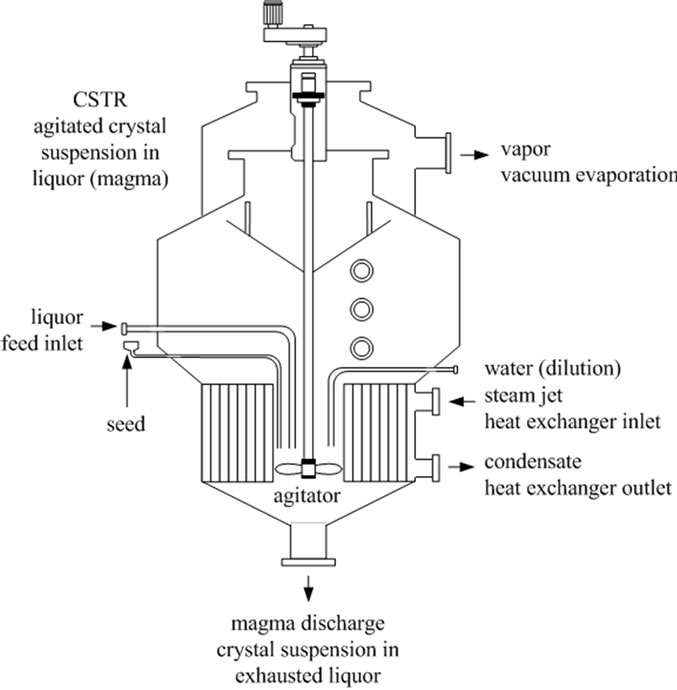
Figure 1. CSTR used for sugar crystallization.
The mass balance applied to the water in the reactor leads to the following equation:
 (3)
(3)
The mass of impurities contained in solution is obtained using the following expression:
 (4)
(4)
An energy balance applied to the magma in the reactor allows to express the mass of emitted vapor:
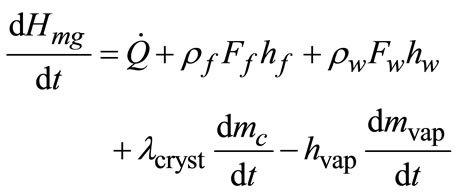 (5)
(5)
Considering  and
and 
 , the enthalpy variation of the magma can be written as follows:
, the enthalpy variation of the magma can be written as follows:
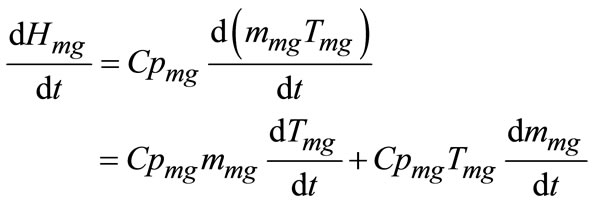 (6)
(6)
In the previous equation, the specific heat of the magma is a function of the masses of impurities, water, dissolved sucrose and crystals as indicated in appendix. This dependence, which is of second order importance, is neglected to simplify the notation.
During the crystallization process, the temperature of the magma is available on-line. It has been observed that its variation is small and negligible compared to the mass variation. Consequently, it can be written:
 (7)
(7)
The mass of emitted vapor can be expressed as follows:
 (8)
(8)
Replacing ms, mc, mw and mi in Equation (9) by their expressions (1)-(4), it comes:
 (9)
(9)
Finally, mvap can be replaced in Equation (3).
The kinetics parameter  is estimated via reverse technique thanks to seven databases supplied by the Bois-Rouge factory. The experimental validation and the identification of the model can be consulted in Damour et al., 2011 [18].
is estimated via reverse technique thanks to seven databases supplied by the Bois-Rouge factory. The experimental validation and the identification of the model can be consulted in Damour et al., 2011 [18].
3. Global Linearizing Control Design
3.1. Linearizing Control Principle
During the last decades, differential geometry has been accepted as a relevant tool for the design of nonlinear controllers. Most of approaches concerned with this tool consist of a feedback linearization, either input-output or input-state [19-23]. These approaches can be applied to multivariable processes and have some interesting advantages. In fact, the nonlinear state-space model, derived from dynamic mass, energy or momentum balance equations can be directly incorporated within the control algorithm.
Let us consider the following nonlinear SISO system:
 (10)
(10)
where  is the state vector, u and y are the input and output variable, respectively.
is the state vector, u and y are the input and output variable, respectively.
The following input-output relation can be deduced:
 (11)
(11)
where ,
, ![]() and
and ![]() are the rth Lie derivatives of
are the rth Lie derivatives of  along f and g. r
along f and g. r n is the relative degree of the system, i.e. the number of times the output has to be differentiated with respect to time before the input u appears explicitly in the resulting equations.
n is the relative degree of the system, i.e. the number of times the output has to be differentiated with respect to time before the input u appears explicitly in the resulting equations.
Once this relation is established, a closed-loop control can be designed. In the case of a setpoint to track, denoted ysp, the tracking problem can be written as follow:
 (12)
(12)
where  is the pursuit error and
is the pursuit error and . The coefficients
. The coefficients  are selected so that the polynomial
are selected so that the polynomial 

 is Hurwitz.
is Hurwitz.
The control signal can be deduced from Equations (9) and (10):
 (13)
(13)
For a multivariable system with a number of inputs equal to the number of outputs, each output is differentiated until at least one input appears explicitly.
3.2. Proposed Control Strategies
Improving the crystallization performance of the process can be reached by improving the crystal growth rate. This growth rate can be apprehended either by following the crystal mass, mc, or the crystal content, cc. Better than the changes in the electrical conductivity, used as controlled variable for the PID controller implemented in the Bois Rouge factory, the variations in mc or in cc tend to describe accurately the complex physicochemical reactions occurring during the phase change. A setpoint tracking of one of these variables appears thus to be a relevant strategy to improve the process performances, even if the choice of the reference trajectory is not trivial.
Beyond the control of mc or cc, an additional control objective is required, and consists in maintaining the solution in an appropriate supersaturated state, called metastable zone. Consequently, a control of the solution concentration is proposed, in order to ensure that it remains in the specific supersaturated state, whatever are the temperature disturbances. The objective consists thus in maintaining the concentration around a constant setpoint in the metastable area. As indicated in Section 2, the variation of the temperature of the magma can be neglected in the energy balance. Nevertheless, some small variations can occur, therefore the setpoint is adapted on-line to counteract the effect of changing temperature conditions by sliding on a concentration trajectory. This trajectory is chosen experimentally according to the concentration versus temperature diagram (Figure 2). Indeed, a measurement of the magma temperature is available. In the sequel, the solution concentration is denoted s, and is expressed in mass of crystal per unit mass of solvent.
Consequently, in the sequels, two control approaches are carried out. In both cases, the solution concentration is controlled to maintain the solution in the mestable area.
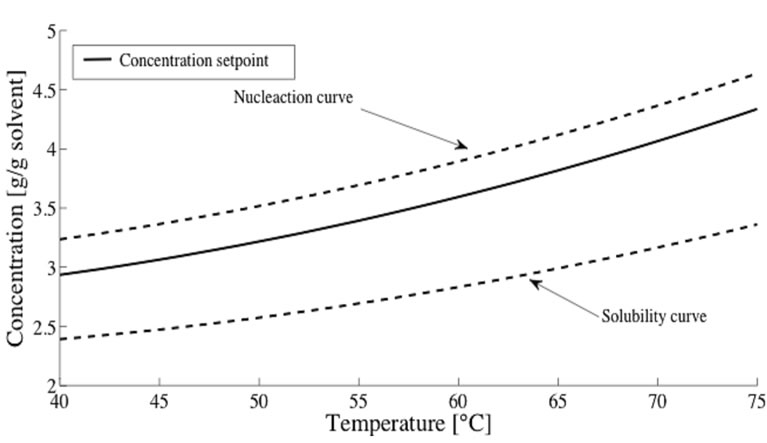
Figure 2. Concentration trajectory.
In the first control strategy, the mass of crystal is chosen as the second controlled variable, whereas the crystal content is used in the second strategy. As mentioned previously, the choice of the crystal mass and the crystal content references could be discussed. In this study, a regular increasing of the crystal mass and the crystal content from their initial value to their final value is proposed. In both cases, the determination of the slope is based of experimental observations (Figures 3 and 4).
At last, although only two are required, three manipulated variables are at disposal: the liquor feeding flow rate Ff, the water dilution flow rate Fw and the heating steam power . To respect conditions usually met in industrial crystallization control, the water dilution flow rate Fw is taken equal to zero during the growing phase. Nevertheless, the pertinence of this choice will be studied in Section 4.3. Besides, the crystallization conversion rate αcryst is assumed to be constant.
. To respect conditions usually met in industrial crystallization control, the water dilution flow rate Fw is taken equal to zero during the growing phase. Nevertheless, the pertinence of this choice will be studied in Section 4.3. Besides, the crystallization conversion rate αcryst is assumed to be constant.
3.3. Control Design
Let us apply the linearizing control to the model designed in Section 2. First, let us rewrite the model as a classical state space representation:

where  represents the input vector,
represents the input vector, ![]() the state vector and
the state vector and
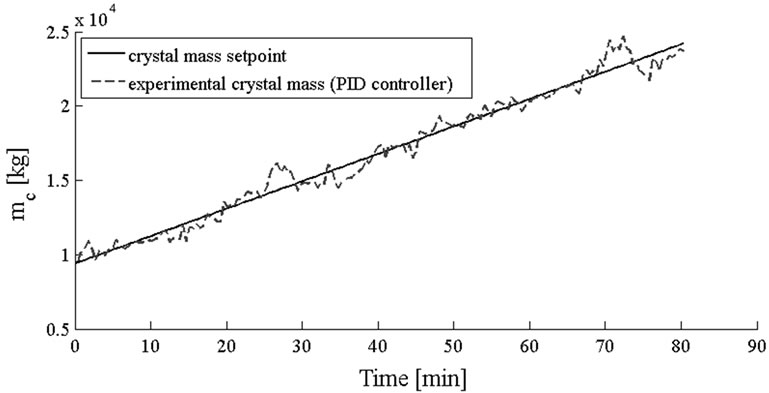
Figure 3. Crystal mass setpoint.

Figure 4. Crystal content trajectory.

with, 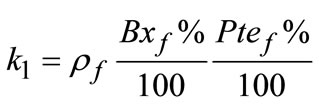 ;
;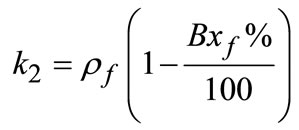 ;
;  ;
;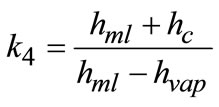 ;
;  ;
; .
.
In matrices A and B, all the thermal and physical parameters are issued from literature or estimated from available correlations (more details can be consulted in Damour et al., 2011 [18]), and the temperature of the magma, assumed to be constant, is measured on-line.
It can be noticed that the state evolution is represented by a linear model. On the contrary, the output evolution is nonlinear, but differs according to the chosen strategy, as presented below.
3.3.1. First Control Strategy
This strategy considers the crystal mass and the concentration as controlled variables that leads to the following output vector:
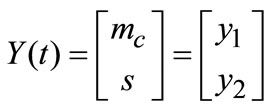 and the corresponding nonlinear output function
and the corresponding nonlinear output function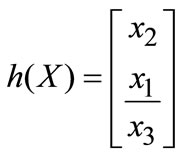 .
.
As mentioned is subsection (3.1), the first step is to establish an input/output relation. The input/output linearization is obtained differentiating the output function until at least one input appears:

Under the assumption of a constant crystallization conversion:

After two differentiations of y1 the first input  appears that leads to a relative degree r1 of two.
appears that leads to a relative degree r1 of two.
Only one differentiation of y2 is required to exhibit inputs u1, u2 and u3 that leads to a relative degree r2 of one.

The second step consists in establishing the closed-loop control law. As previously mentioned in subsection (3.1), the tracking control problem can be written as follow:


3.3.2. Second Control Strategy
This second strategy considers the crystal content and the concentration as controlled variables that leads to the following output vector:
 and the corresponding nonlinear output function
and the corresponding nonlinear output function .
.
It can be noticed that in this case, the second output y2 is the same that in the first proposed strategy. Since the input/output linearization and the closed-loop control problem for y2 have already been presented, only the first output y1bis will be considered in the following.
The same procedure used for the first strategy is applied to obtain the input/output linearization:

That leads to:

After one differentiation of y1bis all inputs u1, u2 and u2 appear that leads to a relative degree r1bis of one.
The second step consists in establishing the closedloop control law. In this case, the tracking control problem can be written as follow:

where mmg = x1 + x2+ x3+ x4.
3.4. State Variable Estimation
In this case, four on-line industrial measurements are available:
• the total dry mater mass percentage, ![]() (given by a micro wave sensor)
(given by a micro wave sensor)
• the dissolved dry mater mass percentage,  (given by a refractometer sensor)
(given by a refractometer sensor)
• the temperature of the sucrose solution
• the mass of emitted vapor .
.
The crystal content cc is obtained by an indirect measurement using the following expression:

And the total mass of sucrose contained in the solution  is obtained using the following expression, where the initial quantity of sucrose introduced in the tank is perfectly known:
is obtained using the following expression, where the initial quantity of sucrose introduced in the tank is perfectly known:

In other words, only one output is an available measurement. The outputs y1 and y2 are needed and require to observe the state vector using an estimator. In Damour et al. (2011) [18] is established the observability of the system and a satisfying extended Luenberger observer is designed and validated. So, vector X must be replaced by the estimate, X. That leads to the following multivariable setpoint tracking control problem:
3.4.1. First Strategy

3.4.2. Second Strategy

4. Linearizing Control of the Industrial Crystallization Process
This subsection highlights the benefits of the proposed linearizing control strategies for industrial sugar crystallization. Applicability of the strategies is tested via a process simulator using industrial databases. Simulation results demonstrate good performance in setpoint tracking for both proposed control strategies (4.1). Besides, comparison between simulation results and industrial experimental data (from PID-controlled process) illustrates the benefits of the proposed strategies, especially in terms of energy saving (4.2). Finally, the effect of the water dilution flow rate during the growing phase is studied in subsection (4.3).
4.1. Control Performance
As previously mentioned, the determination of the mass of crystals trajectory y1sp, the crystal content setpoint y1bissp and the concentration setpoint y2sp are based on experimental observations.
The performance of both proposed control strategies, in terms of multivariable setpoint tracking, are tested via simulation based on industrial databases.
4.1.1. First Control Strategy
Figures 5 and 6 represent the setpoint tracking for the crystal mass and the concentration of the solution and Figures 7 and 8 show the evolution of the manipulated variables. It can be noticed that this approach leads to a good trajectories tracking for both controlled variables with admissible values for both manipulated variables during the whole growing phase.
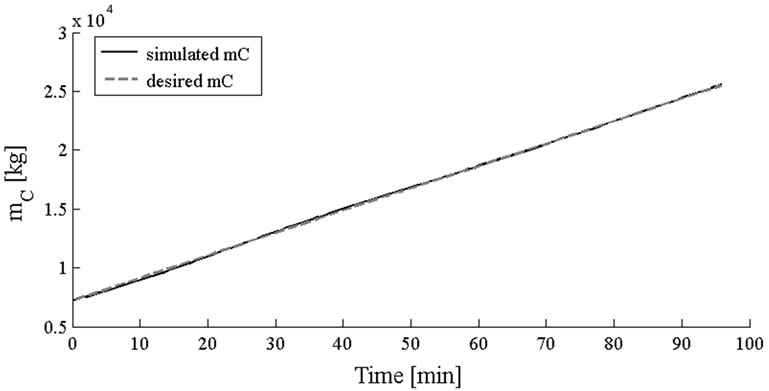
Figure 5. Crystal mass setpoint tracking (database 1).
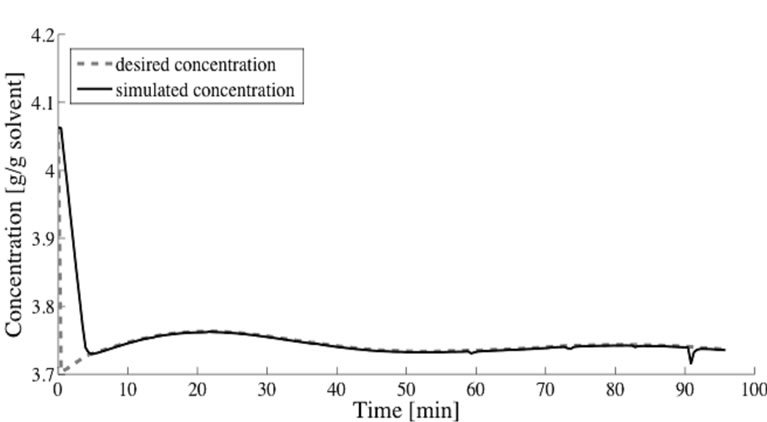
Figure 6. Concentration setpoint tracking (database 1).
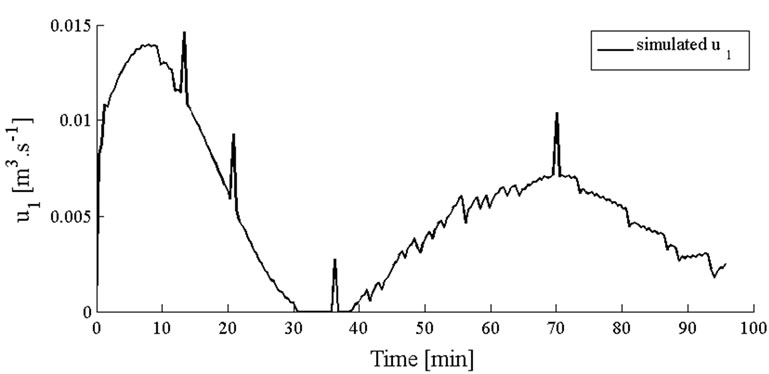
Figure 7. Liquor feeding flowrate—U1 (database 1).
4.1.2. Second Control Strategy
This strategy offers a good performance in terms of setpoint tracking for both crystal content and concentration (Figures 9 and 10). Besides, it leads to admissible values for both manipulated variables during the whole growing phase (Figures 11 and 12).
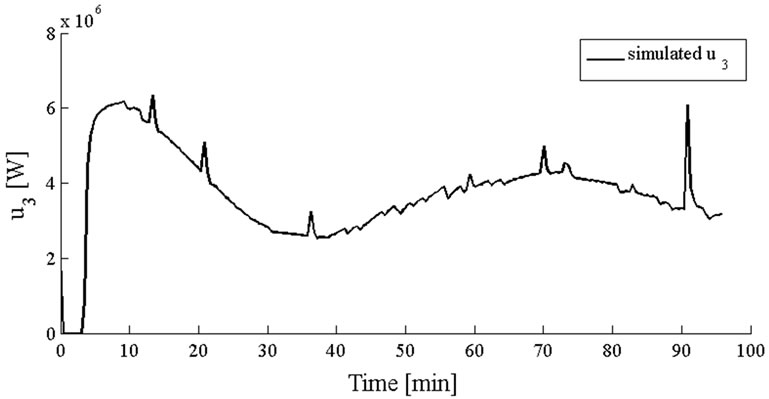
Figure 8. Heating power—U3 (database 1).
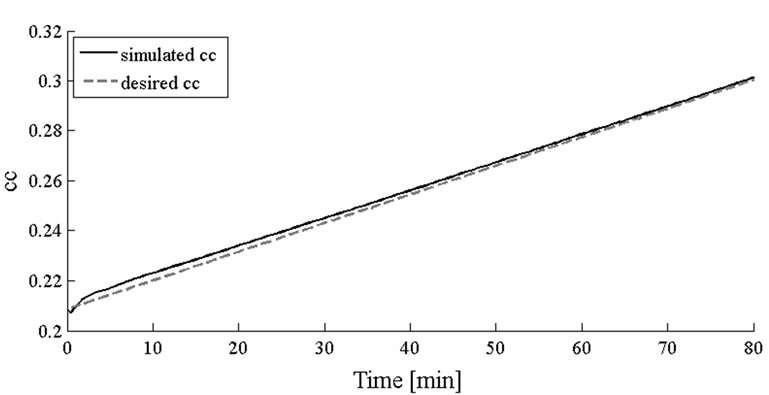
Figure 9. Crystal content setpoint tracking (database 2).
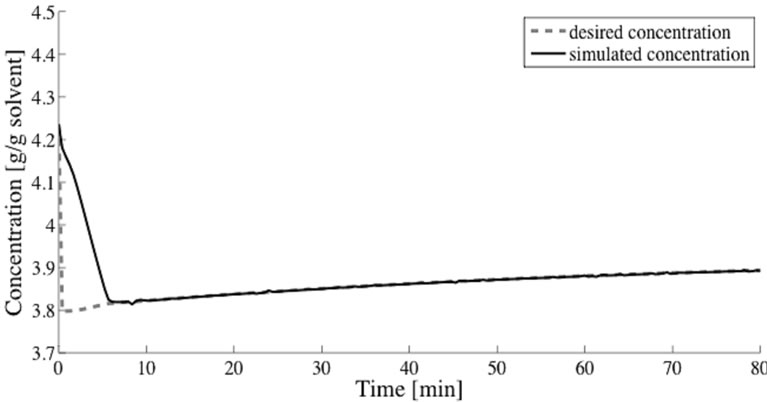
Figure 10. Concentration setpoint tracking (database 2).

Figure 11. Liquor feeding flowrate—U1 (database 2).
4.2. Benefits of the Linearizing Control Strategies Proposed
This subsection illustrates the benefits of the linearizing multivariable setpoint tracking control. In this purpose, a comparison is made between the control strategies proposed in this paper and the current PID controller used in industry.
4.2.1. First Strategy
Considering the same experimental conditions a comparison is made between the first proposed strategy and the current industrial control strategy.
Considering almost the same final crystal mass (Figure 13), the linearizing control approach offers less oscillation regarding both manipulated variables (Figures 14 and 15). Besides, this approach leads to a significant energy saving of 2 × 109 J that represents about 10% of energy saving (integration of the heating power Figure 15).
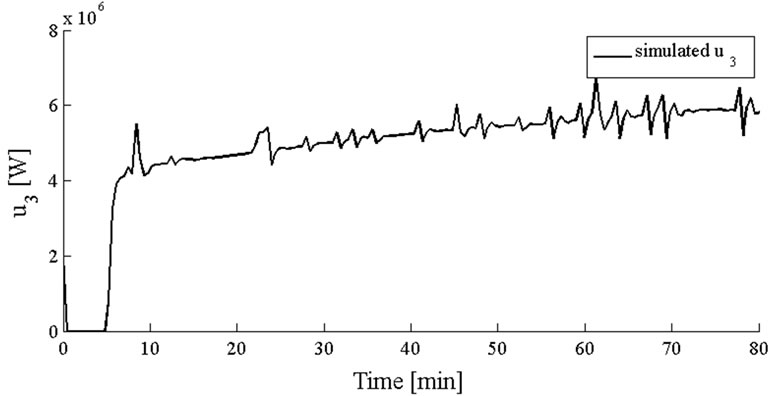
Figure 12. Heating power—U3 (database 2).
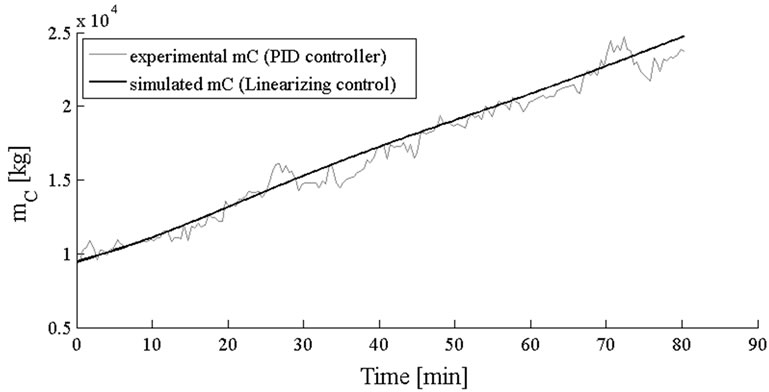
Figure 13. Evolution the crystal mass (database 3).
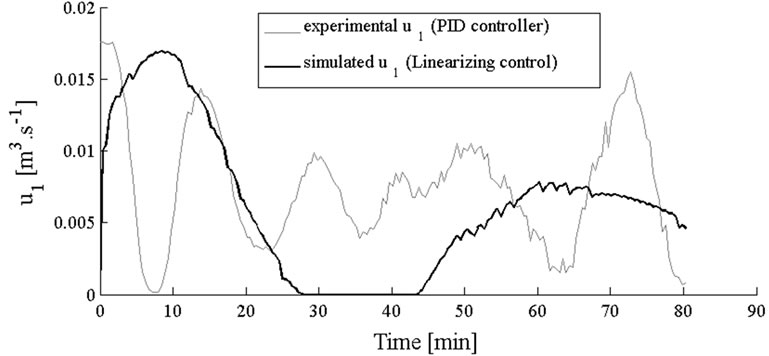
Figure 14. Liquor feeding flow rate—U1 (database 3).
4.2.2. Second Strategy
Considering the same experimental conditions a compareson is made between the second proposed strategy and the current industrial control strategy.
Considering almost the same crystal content evolution (Figure 16), the linearizing control approach offers less oscillation regarding both manipulated variables (Figures 17 and 18). Besides, this approach leads to a significant energy saving of 2.2 × 109 J that represents about 11% of energy saving (integration of the heating power Figure 18).
It is important to notice that both proposed strategies leads to almost the same final crystal mass using nearly the same volume of liquor feeding. Figure 19 shows the evolution of the crystal mass with respect to time for the second proposed control strategy.

Figure 15. Heating power—U3 (database 3).
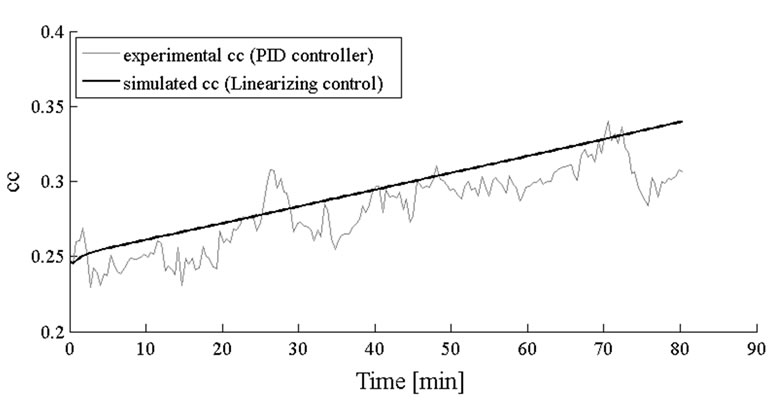
Figure 16. Evolution the crystal content (database 3).

Figure 17. Liquor feeding flow rate—U1 (database 3).
4.3. Effect of the Water Dilution Flow Rate during the Growing Phase
In sugar industry, the water dilution flow rate is usually set to zero during the growing phase. The growing phase requires keeping the solution in the metastable zone by both liquor supply and evaporation. Water dilution supply involves evaporating more to keep the solution in the same thermodynamic state. In other words, add water dilution during the growing phase requires more energy to keep the solution in the same desired supersaturated state. Figure 20 shows the heating power needed to keep the solution in the desired supersaturated state for different values of the water dilution flow rate.
Figures 20 and 21 confirm that an increasing of the water dilution flow rate leads to an increasing of the heating power and so an increasing of the energy consumption during the growing phase. For example, a water dilution flow rate set to 4 L.h–1 leads to an additional energy consumption of 850,000 kJ (Figure 21).

Figure 18. Heating power—U3 (database 3).
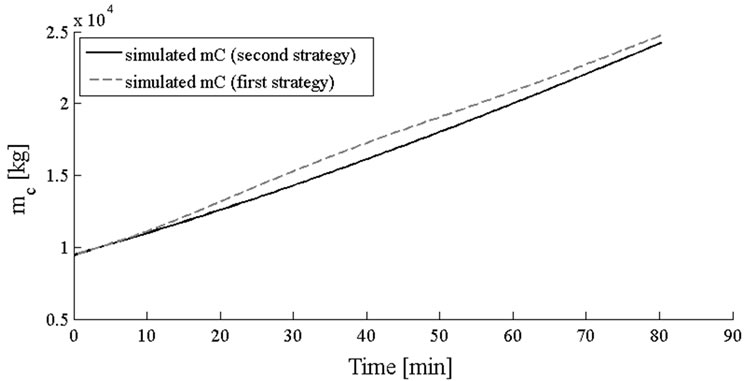
Figure 19. Evolution of the crystal mass with both proposed strategies (database 3).
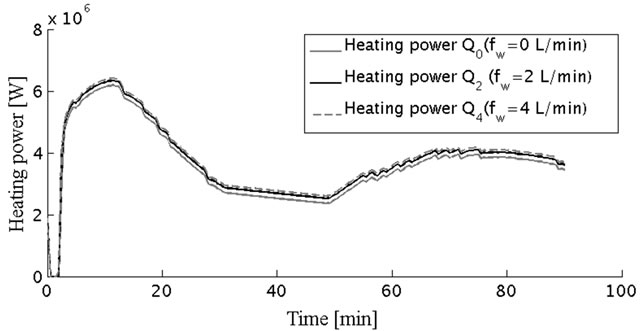
Figure 20. Evolution of the heating power for different values of the water dilution flow rate (database 3).
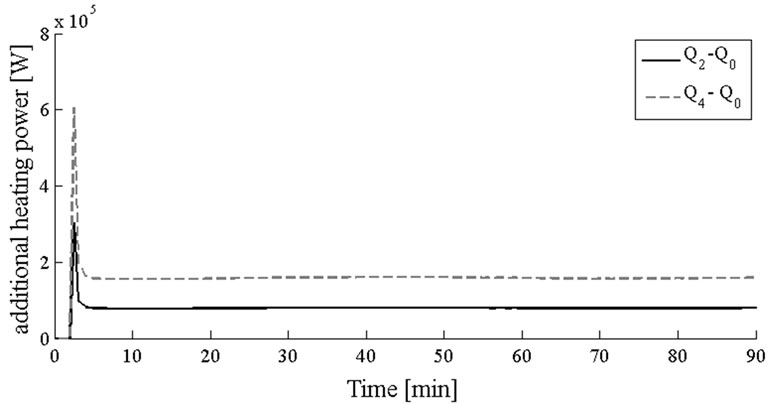
Figure 21. Additional heating power required to keep the solution in the same thermodynamic range (database 3).
5. Conclusions
In this paper, two novel supersaturation control strategies, dedicated to last stage sugar crystallization, have been developed to improve the energy efficiency of an Industrial process, both based on multivariable setpoint tracking. In a first stage, alternative controlled variables, such as the crystal mass, the crystal content and the concentration have been proposed to replace the widely used electrical conductivity of the solution. Due to the unavailability of on-line concentration and crystal mass measurements, the proposed control strategies are based on an extended Luenberger observer. In a second stage, a more suitable control algorithm, an input-output linearizing approach, has been developed to overcome the limitation of the classical PID controller.
In terms of process control, simulation results show that both proposed strategies lead to good performance in setpoint tracking. Besides, in comparison with the current industrial control strategy, the proposed control strategies induce fewer oscillations regarding all manipulated variables.
In terms of energy efficiency, both proposed control strategies lead to significant energy saving. The growing phase requires, with the proposed strategies, around 810 kJ per kilogram of sugar. In comparison with the current industrial control strategy, the proposed control strategies lead to an annual energy saving of 3000 MWh.
6. Acknowledgements
This study is the fruit of an industrial partnership between Bois-Rouge sugar mill, eRcane research institute and University of La Reunion. The authors gratefully acknowledge the help of Mr. Jean-Claude Pony, Dir. of the BR sugar mill (www.bois-rouge.fr), and its technical staff, and Mr. Jean-Paul Dijoux, networks engineer (www.ercane. re).
REFERENCES
- U. Vollmer and J. Raisch, “
 -Control of a Continuous Crystallizer,” Control Engineering Practice, Vol. 9, No. 8, 2001, pp. 837-845. doi:10.1016/S0967-0661(01)00048-X
-Control of a Continuous Crystallizer,” Control Engineering Practice, Vol. 9, No. 8, 2001, pp. 837-845. doi:10.1016/S0967-0661(01)00048-X - N. Moldovainyi, B. Lakatos and F. Szeifert, “Model Predictive Control of MSMPR Crystallizers,” Journal of Crystal Growth, Vol. 275, No. 1-2, 2005, pp. 1349-1354. doi:10.1016/j.jcrysgro.2004.11.170
- Q. Hu, S. Rohani, D. X. Wang and A. Jutan, “Optimal Control of Batch Cooling Seeding Crystallizer,” Powder Technology, Vol. 156, No. 2-3, 2005, pp. 170-176. doi:10.1016/j.powtec.2005.04.010
- P. Georgieva and S. Feyo de Azevedo, “Neural Network-Based Control Strategies Applied to a Fed-Batch Crystallization Process,” Computational Intelligence, Vol. 3, 2006, pp. 224-233.
- W. Paengjuntuek, A. Arpornwichanop and P. Kittisupakorn, “Product Quality Improvement of Batch Crystallizer by a Batch-to-Batch Optimization and Nonlinear Control Approach,” Chemical Engineering Journal, Vol. 139, No. 2, 2008, pp. 344-350. doi:10.1016/j.cej.2007.08.010
- M. Sheikhzadeh, M. Trifkovic and S. Rohani, “Real-Time Optimal Control of an Anti-Solvent Isothermal SemiBatch Crystallization Process,” Chemical Engineering Science, Vol. 63, No. 3, 2008, pp. 829-839. doi:10.1016/j.ces.2007.09.049
- Z. K. Nagy, “Model Based Robust Control Approach for Batch Crystallization Product Design,” Computers & Chemical Engineering, Vol. 33, No. 10, 2009, pp. 1685- 1691. doi:10.1016/j.compchemeng.2009.04.012
- S. Feyo de Azevedo, J. Chorão, M. J. Gonçalves and L. Bento, “On-Line Monitoring of White Sugar Crystallization through Software Sensors, Part I,” International Sugar Journal, Vol. 95, 1993, pp. 483-488.
- S. Feyo de Azevedo, J. Chorão, M. J. Gonçalves and L. Bento, “On-Line Monitoring of White Sugar Crystallization through Software Sensors, Part II,” International Sugar Journal, Vol. 96, 1994, pp. 18-26.
- D. Devogelaere, M. Rijckaert, O. G. Leon and G. C. Lemus, “Application of Feed Forward Neural Networks for Soft Sensors in the Sugar Industry,” VIIth Brazilian Symp. on Neural Networks, 2002, pp. 2-6.
- A. Simoglou, P. Georgieva, E. B. Martin, A. J. Morris and S. Feyo de Azevedo, “On-Line Monitoring of a Sugar Crystallization Process,” Computers & Chemical Engineering, Vol. 29, No. 6, 2005, pp. 1411-1422. doi:10.1016/j.compchemeng.2005.02.013
- H. M. Hulburt and S. Katz, “Some Problems in Particle Technology. A Statistical Mechanical Formulation,” Chemical Engineering Science, Vol. 19, No. 8, 1964, pp. 555-574. doi:10.1016/0009-2509(64)85047-8
- D. Ramkrishna, “The Status of Population Balances,” Reviews in Chemical Engineering, Vol. 3, 1985, pp. 49- 95.
- B. Grondin-Perez, M. Benne and J.-P. Chabriat, “Supervision of C Crystallization in Bois Rouge Sugar Mill Using On-Line Crystal Content Estimation Using Synchronous Microwave and Refractometric Brix Measurements,” Journal of Food Engineering, Vol. 76, No. 4, 2006, pp. 639-645. doi:10.1016/j.jfoodeng.2005.06.014
- S. Beyou, “Proposition d’un Algorithme PID à Paramètres Variables pour l’Amélioration de la Conduite d’un Procédé de cristallisation industriel,” Ph.D. Thesis, University of La Réunion, 2008.
- C. Pautrat, J. Génotelle and M. Mathlouthi, “Sucrose Crystal Growth: Effect of Supersaturation, Size and Macromolecular Impurities,” In: VanHook et al., Eds., Sucrose Crystallization, Science and Technology, Bartens, 1997, pp. 57-70.
- S. Barth, “Utilization of FBRM in the Control of CSD in a Batch Cooled Crystallizer,” Ph.D. Thesis, Georgia Institute of Technology, 2006.
- C. Damour, M. Benne, L. Boillereaux, B. Grondin-Perez and J. P. Chabriat, “Multivariable Linearizing Control of an Industrial Sugar Crystallization Process,” Journal of Process Control, Vol. 21, No. 1, 2011, pp. 46-54. doi:10.1016/j.jprocont.2010.10.002
- H. Nijmeijer and A. J. Van der Schaft, “Nonlinear Dynamical Control System,” Springer, Berlin, 1990.
- J. J. Slotine and W. Li, “Applied Nonlinear Control,” Prentice Hall, New Jersey, 1991.
- J. Gonzalez, R. Aguilar, J. Alvarez-Ramirez, G. Fernandez and M. Barron, “Linearizing Control of a Binary Distillation Column Based on a Neuro-Estimator,” Artificial Intelligence in Engineering, Vol. 13, No. 4, 1999, pp. 405-412. doi:10.1016/S0954-1810(99)00018-7
- J. Madar, J. Abonyi and F. Szeifert, “Feedback Linearizing Control Using Hybrid Neural Networks Identified by Sensitivity Approach,” Engineering Application of Artificial Intelligence, Vol. 18, No. 3, 2005, pp. 335-343. doi:10.1016/j.engappai.2004.09.006
- I. Simeonov and I. Queinnec, “Linearizing Control of the Anaerobic Digestion with Addition of Acetate (Control of the Anaerobic Digestion),” Control Engineering Practice, Vol. 14, No. 7, 2006, pp. 799-810. doi:10.1016/j.conengprac.2005.04.011
Nomenclature
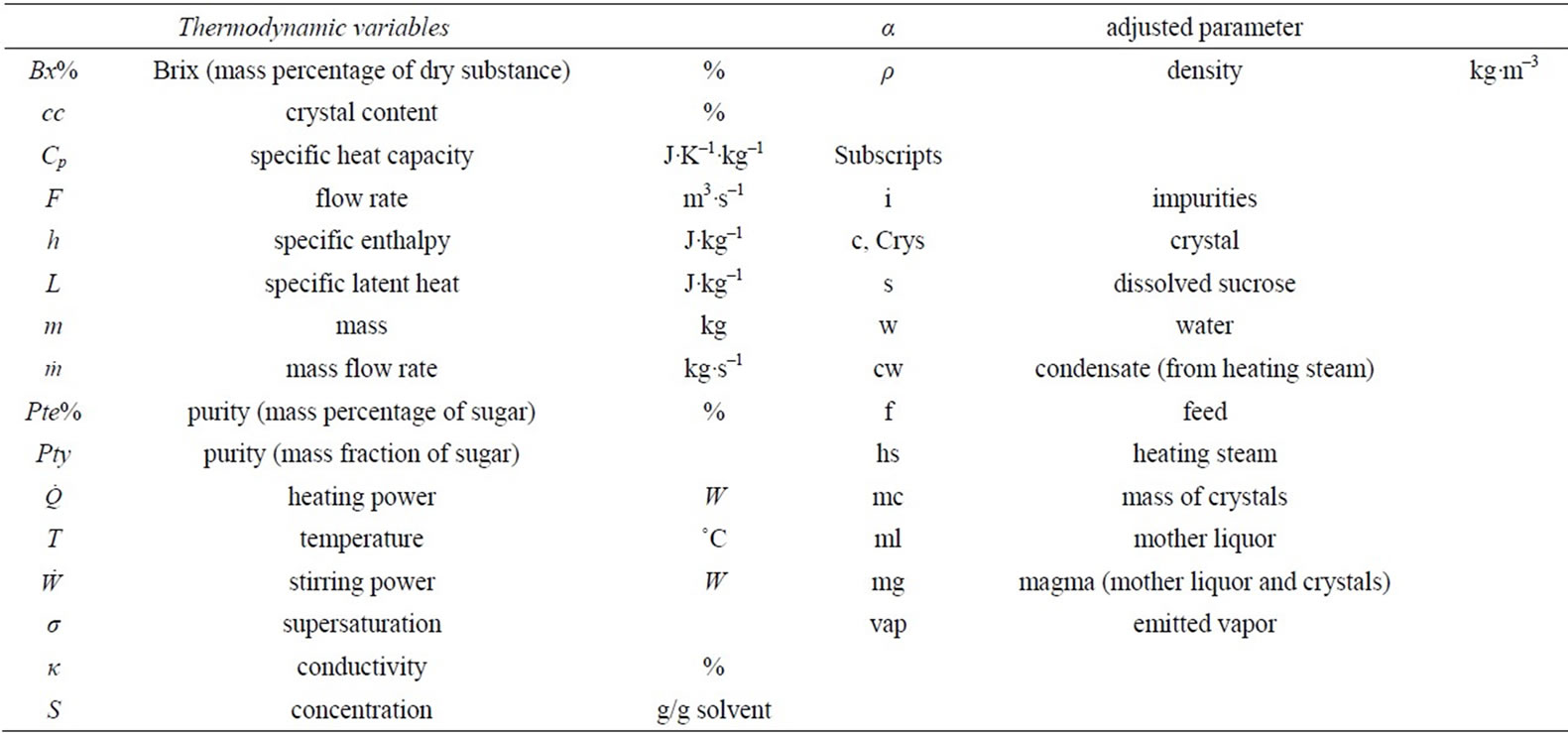
NOTES
*Corresponding author.

